Exploring the Charm of Amsterdam’s Golden Age Architecture
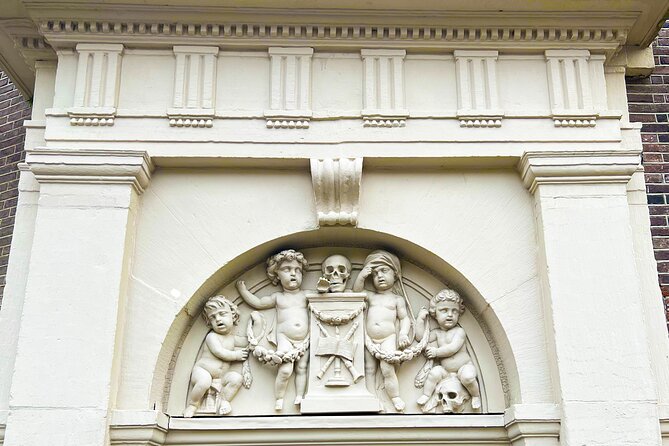
The Private Golden Age Architecture Tour in Amsterdam offers a fascinating glimpse into the city’s 17th-century rise as a trading powerhouse. Led by a local guide, Anna, who lives in the neighborhood, this 90-minute walk combines historical insight with authentic, on-the-ground perspectives. What we love about this experience is its perfect blend of detailed storytelling, stunning visuals, and intimate atmosphere.
You’ll get to see Amsterdam’s most iconic landmarks, from the Royal Palace to the famous canal houses, all while learning about the engineering feats and cultural influences behind them. It’s a tour that appeals equally to architecture buffs, history enthusiasts, and curious travelers eager to see a city’s history unfold through its buildings.
One thing to consider is that this tour involves walking for around an hour and a half. While most you will find this manageable, those with mobility issues or difficulty standing for extended periods might want to plan accordingly.
This experience is ideally suited for those wanting a detailed, authentic look at Amsterdam’s most celebrated architecture, complemented by local insights and stories that go beyond the usual guidebook narratives.
Good To Know
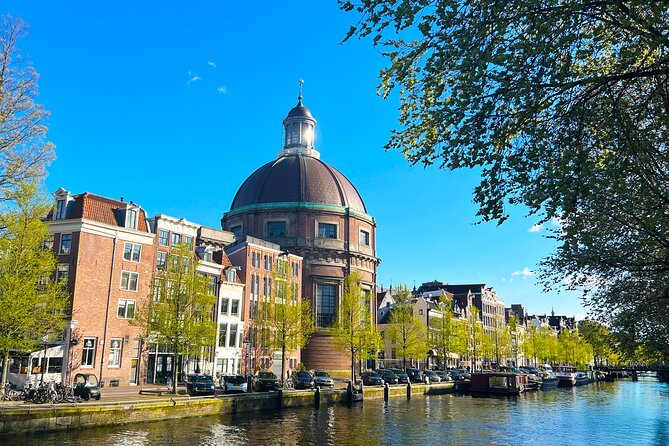
- Expert local guide: Anna’s knowledge and neighborhood insights make the tour unique.
- Iconic landmarks: From Dam Square to Westerkerk, the tour covers Amsterdam’s architectural highlights.
- Authentic stories: Learn intriguing facts about the buildings’ design, engineering, and historical significance.
- Efficient and intimate: With a duration of around 1.5 hours, it’s a compact yet comprehensive exploration.
- Great value: At approximately $71 per person, the personalized experience offers excellent educational and visual rewards.
- Accessibility note: The tour involves walking and standing; not suitable for those with mobility challenges.
Like guided experiences? More Amsterdam tours with local guides
A Closer Look at the Golden Age Architecture Tour

Starting Point: Dam Square
The tour kicks off at Dam Square, the heart of Amsterdam, where you’re introduced to the city’s Golden Age significance. Here, you learn how Amsterdam’s rise during the 17th century turned it into a global trading hub, shaping its distinctive architecture. The square itself is a lively hub, but your guide will keep the focus on how the square reflects that era’s prosperity.
The Royal Palace: A Masterpiece of Neoclassical Design
Next, the Royal Palace stands as a symbol of Amsterdam’s power during its Golden Age. Built originally as the city’s town hall, it’s an impressive example of Dutch Neoclassical architecture. The guide—Anna—brings history to life by explaining how the building materials, such as limestone and sandstone, contributed to its grandeur. She also shares an interesting engineering tidbit about how it was constructed on marshy ground, showcasing Dutch ingenuity.
Huis Bartolotti: A Touch of Italian Flair
Moving along, you’ll find Huis Bartolotti, a striking 17th-century house with a red brick façade and intricate sandstone details. This building isn’t just about aesthetics; it tells a story of Amsterdam’s trading ties with Italy and the wealth that flowed through the city during the Golden Age. The ornate design reveals the opulence of its original owner and the craftsmanship of the period.
Prefer private tours? More Amsterdam exclusive experiences we've written about
Torensluis Bridge: Viewing the Urban Resilience
Over the wide Torensluis bridge, you get a fantastic vantage point of Amsterdam’s “crooked houses”—buildings that lean or twist, often whimsically, due to the city’s soft, marshy ground. Anna explains how these architectural quirks aren’t flaws but clever adaptations. These buildings, with their baroque facades and detailed gables, epitomize the creativity and resilience of the Golden Age merchants.
De Dolphijn: Maritime Wealth Reflected in Architecture
De Dolphijn, named after the dolphin symbol of wealth, is a prime example of the prosperity driven by maritime trade. Once owned by Frans Banning Cocq, the captain depicted in Rembrandt’s Night Watch, this house’s elegant design underscores the importance of commerce and wealth during the period. Anna shares stories about how such buildings were status symbols for the city’s elite.
Ronde Lutherse Kerk: The Renaissance Architectural Triumph
The church’s domes mark a significant achievement of Renaissance architecture. While brief, this stop reveals how the design symbolized religious and cultural shifts in Amsterdam’s Golden Age, with its elegant domed structure standing out among the more understated canal houses.
Prinsengracht: Warehouses of Wealth
Along Prinsengracht, you’ll see the functional yet grand warehouse buildings—tall, steeply pitched gables with large windows and wooden hoisting beams. These structures, designed for cargo handling, are a testament to Amsterdam’s thriving trade. The simplicity of their exteriors reflects their utilitarian purpose, yet their size and scale underscore the wealth of the merchants.
The Jordaan Neighborhood: Narrow Canals and Facade Stones
In the Jordaan, the focus shifts to “gevelstenen”—decorative facade stones embedded in buildings. Anna explains that these small plaques often indicated a tradesperson’s profession or social status. Originally a working-class district, this neighborhood’s narrow, picturesque streets also reveal the city’s urban expansion during the Golden Age.
Westerkerk: A Spire and a Final Resting Place
Finally, the tour concludes at Westerkerk, a church with an 85-meter spire crowned with an imperial crown—an emblem of Amsterdam’s stature. It’s also notable as the final resting place of Rembrandt. From this vantage point, the view over the Jordaan and the canal network offers a fitting end to a journey through the city’s architectural history.
Why This Tour Offers Great Value

Compared to larger, less personalized options, this private tour is a good investment for those wanting a detailed, curated experience. At $71.24 per person, you’re paying for expert guidance from someone who not only knows the buildings but lives nearby and offers insights that go beyond textbook facts. The small group setting ensures you won’t be lost in a crowd, and the private guide can tailor the conversation to your interests.
The Teaching Element
What truly sets this tour apart is how Anna shares stories about the buildings’ original owners, construction techniques, and how these structures have been adapted for modern use. As one reviewer noted, she “knows everything about the neighborhood” and delivers her insights in perfect English, making the experience both educational and engaging.
Authenticity and Local Perspective
Because Anna lives locally, she can point out details that typical guidebooks might overlook. For example, you might learn about how certain buildings are still used today—whether as private residences, offices, or cultural sites—and hear about current neighborhood life, adding depth to the historical facts.
Visual and Educational Impact
The tour’s itinerary covers a variety of architectural styles and building functions, from the grand neoclassical palace to the humble facade stones of Jordaan. Expect plenty of photo opportunities and chances to appreciate Amsterdam’s ingenuity. The guide’s explanations about the adaptation of baroque features and the engineering solutions for marshy ground make the buildings’ beauty all the more meaningful.
Practical Details and Tips
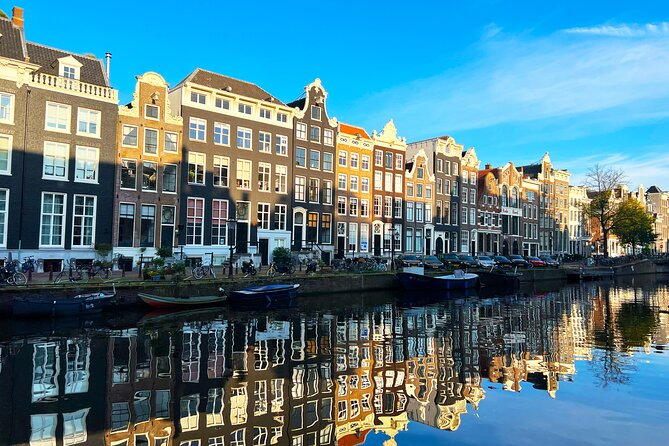
Booking this tour in advance, on average 31 days ahead, ensures a spot, especially during peak season. The tour operates with mobile tickets for convenience, and it begins near the Royal Palace at Dam Square, ending close to Westerkerk, which is handy if you want to explore further or visit the Anne Frank House.
While most travelers will find this easy to participate in, it’s worth noting that it involves walking and standing for around 1.5 hours. The tour isn’t wheelchair accessible, and participants who use mobility aids may find it challenging.
Bottled water isn’t included, so consider bringing some along, especially on warm days. The tour’s price point is reasonable for the quality of storytelling and the depth of knowledge you gain, making it excellent value for those eager to understand the city’s architectural story.
The Sum Up
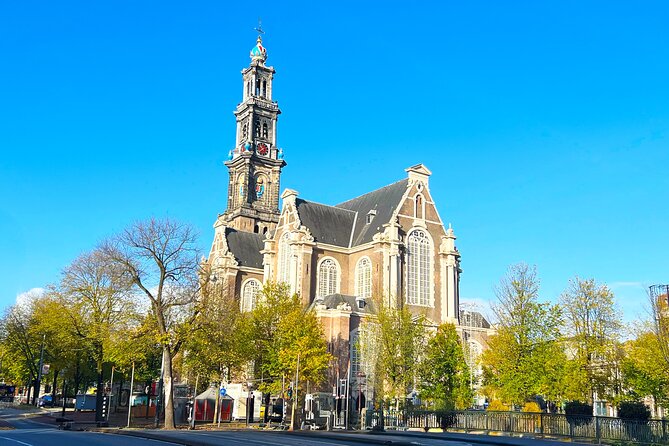
This private Golden Age architecture tour offers a rare chance to see Amsterdam through a detailed, personal lens. It’s best suited for travelers who appreciate history, architecture, and storytelling, and who want to go beyond surface-level sightseeing. With a knowledgeable guide like Anna, you’ll uncover the stories behind the buildings that define Amsterdam’s skyline, all while enjoying the intimacy of a small group.
If you’re after a meaningful, visual exploration of the city’s most iconic structures, this tour delivers. It’s a wonderful blend of education, authentic insight, and beautiful scenery, making it a memorable way to connect with Amsterdam’s past and present.
FAQ
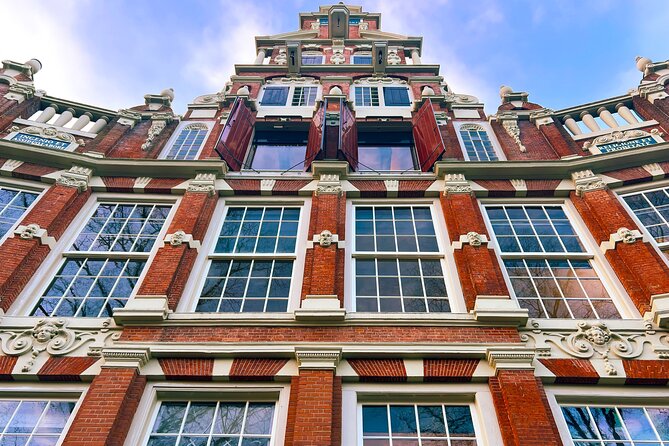
How long does the tour last?
The tour lasts approximately 1 hour 30 minutes, making it a manageable and focused experience.
Where does the tour start and end?
It begins at Palace Dam Square and finishes near Westerkerk, close to the Anne Frank House.
Is this a group or private tour?
It’s a private experience, meaning only your group will participate, allowing for personalized attention from the guide.
What is included in the price?
You get a private guide who shares insights and stories throughout the walk. Bottled water is not included.
Is the tour suitable for all mobility levels?
Most travelers can participate, but it’s not recommended for those who use a walker or have trouble walking and standing for 1.5 hours.
Do I need to book in advance?
Yes, booking around 31 days in advance is recommended to secure your spot, especially during busy seasons.
Can I get a refund if I cancel?
Yes, the tour offers free cancellation up to 24 hours beforehand, providing flexibility if your plans change.
Are tickets mobile?
Yes, the tickets are mobile, making check-in smooth and contactless.
Is this tour good for architecture enthusiasts?
Absolutely, the detailed commentary and focus on the design and engineering of each building make it perfect for architecture lovers.
More Guided Tours in Amsterdam
- From Amsterdam: Private Tour to Bruges with Guide
- Amsterdam Sightseeing Canal Cruise with Audio Guide
- Amsterdam Self-Guided Food Walk: City Bite Tours
- Amsterdam Christmas Market Tour With A Professional Guide
- Amsterdam Bike Food Tour with Private Guide
- Amsterdam Red Light and Coffee Shops Private Guided Walking Tour
More Tours in Amsterdam
- From Amsterdam: Cologne & Antwerp Full-Day Tour
- From Amsterdam: Private Tour to Bruges with Guide
- From Amsterdam: Private Sightseeing Tour to Bruges
- Amsterdam Self-Guided Food Walk: City Bite Tours
- Private Zaanse Schans and Volendam Tour from Amsterdam
- Amsterdam Christmas Market Tour With A Professional Guide
More Tour Reviews in Amsterdam
Looking for something different? Other Amsterdam activities we've written about
- Bruges Day trip from Amsterdam
- Cross Into Belgium from Amsterdam: Unique Border Day Trip!
- From Amsterdam: Day Trip to Formula 1 Belgium Grand Prix
- From Amsterdam: Cologne & Antwerp Full-Day Tour
- From Amsterdam: Private Tour to Bruges with Guide
- From Amsterdam: Private Day Trip to Bruges
- From Amsterdam: Private Sightseeing Tour to Bruges
- Amsterdam Aperol Spritz Cruise
- Amsterdam Sightseeing Canal Cruise with Audio Guide
- 5 Hours Private Tulip Experience at Keukenhof Gardens
- Amsterdam Self-Guided Food Walk: City Bite Tours
- Private Zaanse Schans and Volendam Tour from Amsterdam
